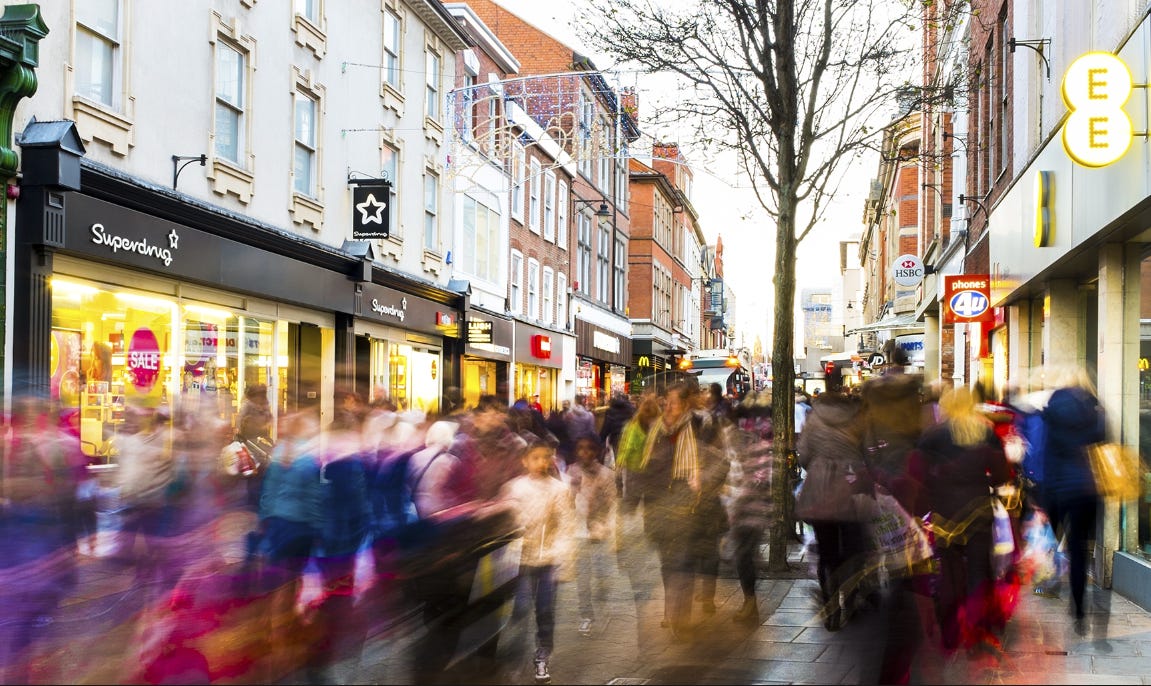3 steps to choose the perfect location for your first retail store
Physical retail stores are special because they help build real-world community and a sense of belonging. Whether you're opening your first store or expanding your fleet of stores, the location of your store is crucial to the success of your brand and business. Here are 3 steps to help you get started on your journey to find the perfect location for your store.
1: Brand — Your location is an expression of your brand
The location you choose and how your store looks and feels tells a story about your brand, therefore it's important to start with the question: What story do I want my location and store to tell about my brand?
For example, each Joie de Vivre hotel draws from the style of a niche-oriented magazine that represents a target market. Their Phoenix hotel was inspired by Rolling Stone Magazine and their Rex hotel was inspired by The New Yorker.
Disney Parks want to inspire delight and adventure. Throughout the park, they place small vents in mysterious places to activate your olfactory senses. Alongside the candy store the vents release vanilla scents to encourage visitors to visit the sweet shops. The Pirates of the Caribbean smells of sea salt and wood; the park entrance smells of fresh buttered popcorn, and the Haunted Mansion smells of dust. These are amazing examples to get you thinking about how you want people to feel and experience your brand.
Describe the emotions you want one to feel when they see your store. For example: Adventure, Beauty and Nostalgia. Make sure to choose words that are authentic to your brand. These words will help shape your decision on where you locate and how you design your store.
2: Strategy — Creating a unique advantage
When choosing a location for your first store, it's important to consider the strategy that will best align with your brand and business goals. There are two main site selection strategies in retail: the "Main & Main" strategy and the "Discover & Experience" strategy.
The "Main & Main" strategy involves choosing a location that has high visibility and significant foot traffic, such as a corner on a busy intersection. This strategy is effective for quickly building brand awareness and getting a lot of people to experience your products or services. However, it also comes with a higher cost for rent and building out the store, and may give the impression of being a large, established brand.
The "Discover & Experience" strategy, on the other hand, involves choosing a location that is near the action but not directly on a main street. This strategy allows for a more gradual growth, while also providing a sense of discovery for customers. This strategy is less expensive and allows you to focus on delighting each customer, while also learning and refining your store operations. Additionally, it can leave customers with the perception that your brand prioritizes quality.
When deciding on a strategy, consider your brand and business goals, as well as your budget and resources. If you have the funds and want to scale quickly, a Main & Main strategy may be appropriate. If you want to focus on providing a unique and high-quality experience for your customers, the Discover & Experience strategy may be a better fit.
3: Choosing the perfect location — Its part art, part science
Choosing the perfect location for your store is a combination of both art and science. To select the best location for your brand, it's important to consider both the demographic characteristics of your core customers and the practical considerations of the location itself.
First, consider the demographic characteristics of your target customers. Who are they? What are their age, income, and lifestyle? For example, Restoration Hardware targets a more affluent customer between the ages of 30-60+. Knowing this target demographic can help narrow down locations where those types of customers exist.
Population density is also an important factor as volume can cure a lot of ills in the retail business. A store in a community that has 100k people within a 1/2 mile radius will likely perform better than one in a community that has 100k people within a 2 mile radius.
Additionally, be mindful of the different types of people near the location. For example, if the area is primarily populated by 9-5 workers, your store will likely be busier on weekdays and slower on weekends. It's often preferable to have a location that's busy 7 days a week and has a mix of people who live, work, and play in the area.
Visibility and accessibility are also key considerations. The store should be easy for people to see, and if the location is primarily vehicular-driven, parking should be readily available.
Precision matters. One block can make a huge difference in sales, so it's important to do your diligence on each location. You can't make a location decision from a map, you have to walk the blocks, visit other businesses, talk to people in the community. When you walk the blocks make sure to get a sense of traffic in different day parts (i.e. morning, mid-day, evening if important to your business). Talk to people and other businesses in the community to get a sense of the neighborhood and traffic.
Some additional tips:
Avoid choosing a location you don’t feel GREAT about. Once you sign a lease you are married to that store for a period of time.
Avoid real estate brokers who don’t have a genuine interest in helping you find and negotiate the right location. Choose someone you trust.
Have an experienced lawyer who specializes in retail leases help you negotiate the lease. It’s worth the money.
Keep your buildout costs low. Find a way to be cool on a budget. This will give you some downside protection.

